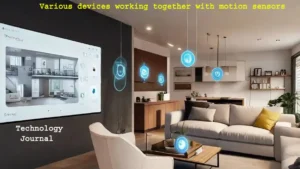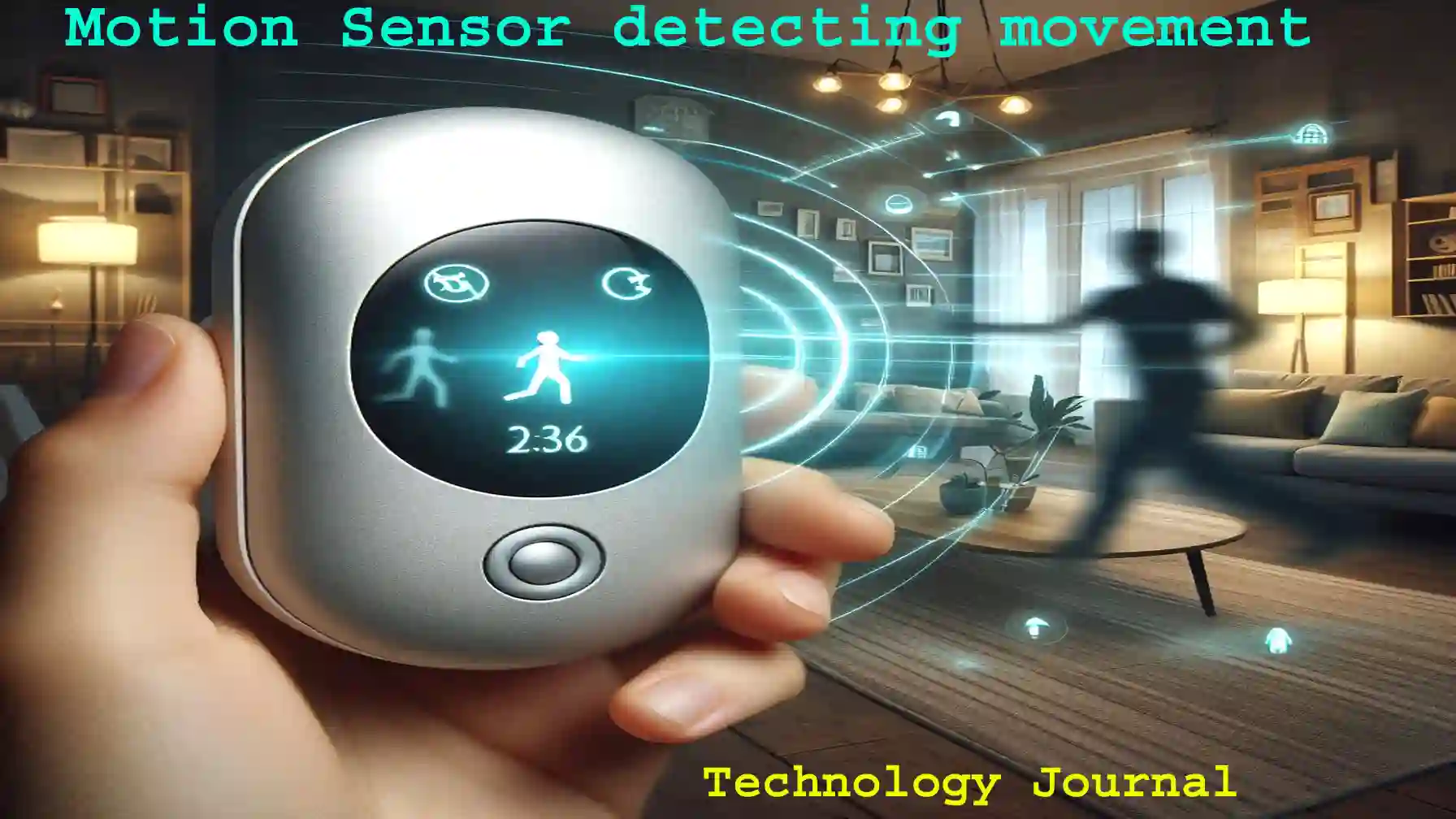Alarming statistics show that nearly 60% of burglaries involve forced entry. Whether you’re a homeowner seeking peace of mind or a business owner protecting your inventory, fortifying your security is crucial. Motion sensors silently stand guard in security systems, acting as your first line of defense against intruders. These ingenious devices can detect even the slightest movement, triggering alarms and alerting you of any suspicious activity.
Intrigued by the inner workings of these silent guardians? Perhaps you’re wondering which type of motion sensor best suits your needs. This ultimate guide will take you on a comprehensive journey through the world of motion sensors. We’ll explore the cutting-edge technology behind them, delve into the various types available, and equip you with the knowledge to choose the perfect security system for your specific requirements. So, buckle up and get ready to dive into the fascinating world of motion detection!
How does a Motion Detector Work?
Motion detectors are key components of security systems, providing an extra layer of protection for homes and businesses. These devices work by detecting movement within their range, triggering an alarm or alerting the homeowner. There are various types of technologies used in motion sensors, each with its unique way of sensing motion.
Passive infrared (PIR) technology is one common method that detects heat radiating from objects in its field of view. Microwave technology emits microwaves to detect motion by measuring changes in frequency caused by movement. Ultrasonic sensors emit sound waves to identify changes in frequency when objects move.
Tomographic motion detectors use radio waves to create a 3D image of the protected area. Video camera software analyzes video footage for any moving objects, while gesture detectors track specific movements like hand gestures. Understanding how these different technologies work can help you choose the best motion sensor for your security needs.
Sensor technology overview
Sensor technology is the backbone of motion detectors, providing them with the ability to detect movement in their surroundings. These sensors come in various forms, each utilizing different technologies to achieve this function.
One common type of sensor used in motion detectors is passive infrared (PIR) technology. PIR sensors can detect changes in infrared radiation emitted by objects as they move within the sensor’s field of view.
Also Read: Maximizing Marketing Efficiency: Choosing the Right Automation Platform
Microwave technology utilizes electromagnetic waves to detect motion. These sensors emit microwave signals and analyze the reflections off moving objects to trigger an alarm.
Ultrasonic sensors work by emitting high-frequency sound waves and measuring how they bounce back from nearby objects. When there are disruptions in these sound waves caused by movement, the sensor activates.
Tomographic motion detectors use radio waves to create a 3D map of their environment, allowing them to detect even subtle movements within their range effectively.
How do motion sensors work?
Motion sensors are electronic devices that detect movement in their surroundings and trigger an alarm or lighting system. These sensors work by detecting changes in infrared energy, microwave signals, ultrasonic waves, or video camera software analysis.
Passive Infrared (PIR) technology is one of the most common types used in motion detectors. PIR sensors detect heat signatures emitted by humans and animals.
Microwave technology emits microwaves to measure motion based on the reflection of these waves off moving objects.
Ultrasonic motion detectors emit high-frequency sound waves and analyze how they bounce back to determine movement.
Tomographic motion detectors use radio waves to create a 3D image of its environment for accurate detection.
Video camera software analyzes visual inputs to identify movements within its field of view.
Gesture detector technology interprets specific gestures made in front of a sensor to activate desired functions.
Motion Sensors Using Passive Infrared (PIR) Technology
Passive Infrared (PIR) technology is a common type of motion detection used in many security systems. It works by detecting changes in infrared radiation levels within its field of view. When someone or something moves across the sensor’s range, it detects the heat emitted and triggers an alarm.
The PIR sensor contains two slots that detect infrared radiation from objects in the surrounding space. As a warm body passes by, it causes a change in temperature between these slots, signaling movement to the system.
These sensors are sensitive to rapid changes in heat signatures but are less effective at detecting slower movements. They work best indoors where there is minimal interference from direct sunlight or other sources of heat.
Passive Infrared technology provides reliable motion detection capabilities for enhancing home security systems without being too complex or costly.
Motion Sensors Utilizing Microwave Technology
Microwave technology is a fascinating aspect of motion sensors that utilizes microwave pulses to detect movement. These sensors emit high-frequency electromagnetic radiation, which bounces off objects in the detection area and returns to the sensor. When an object moves within this field, it causes a change in the frequency of the returning waves, triggering an alarm or notification.
Unlike passive infrared sensors that rely on heat signatures, microwave detectors can penetrate walls and other obstacles. This makes them ideal for outdoor use and areas where line-of-sight may be obstructed. However, they are sensitive to small movements like foliage rustling or pets moving around.
Microwave technology offers reliable performance in detecting motion over large areas with minimal false alarms compared to other sensor types. They are commonly used in commercial settings due to their robust capabilities and ability to cover wide spaces effectively.
Ultrasonic technology
Ultrasonic technology in motion sensors works by emitting high-frequency sound waves that bounce off objects and return to the sensor. This technology is commonly used in indoor settings due to its ability to detect small movements effectively.
When an object moves within the detection range, it disrupts the ultrasonic waves, triggering the sensor to activate. Ultrasonic motion detectors are sensitive enough to pick up even slight motions, making them ideal for areas where passive infrared sensors may not be as reliable.
One advantage of ultrasonic technology is its ability to work well in various environmental conditions, such as changes in temperature or humidity. However, it can sometimes be triggered by non-human movement like airflow or vibrations from machinery.
Ultrasonic technology offers a reliable solution for detecting motion indoors with precision and sensitivity.
Tomographic motion detectors
Tomographic motion detectors are a sophisticated type of sensor that uses radio waves to detect movement within an area. Unlike traditional motion sensors, tomographic detectors can penetrate through walls and solid objects, making them ideal for monitoring large spaces or complex environments.
This technology works by emitting radio waves that bounce off surrounding objects and individuals. By analyzing the reflected signals, the detector can pinpoint changes in the environment and trigger alerts when motion is detected.
One of the key advantages of tomographic motion detectors is their ability to provide coverage over a wide area without the need for multiple sensors. This makes them cost-effective solutions for securing expansive areas like warehouses, factories, or outdoor spaces.
Tomographic motion detectors offer advanced detection capabilities that enhance security measures by providing reliable and accurate monitoring of movements within designated areas.
Video camera software
Video camera software motion detectors are a modern solution to monitoring activity in your home or business. These systems use advanced algorithms and image processing to detect movement captured by surveillance cameras. The software analyzes the video feed in real-time, identifying changes and patterns that indicate motion.
By leveraging artificial intelligence, video camera software can distinguish between different types of movement, such as a person walking versus a tree swaying in the wind. This level of sophistication reduces false alarms and ensures accurate detection when it matters most.
This technology is highly versatile, allowing users to customize settings based on specific needs. Some systems can even send alerts directly to your smartphone, providing instant notifications in case of suspicious activity. With video camera software motion detectors, you can enhance security measures and gain peace of mind knowing your property is being monitored effectively.
Gesture detector
When it comes to cutting-edge motion sensor technology, gesture detectors are at the forefront. These advanced devices can detect and interpret hand movements, making them ideal for smart home applications or interactive displays.
Gesture detectors use specialized sensors to track gestures in real-time, allowing users to control devices with simple hand movements. This innovative technology is revolutionizing how we interact with our surroundings by offering a hands-free and intuitive user experience.
By recognizing specific gestures such as swipes, taps, or waving motions, gesture detectors provide a seamless way to navigate digital interfaces or control smart devices without physical contact. Whether adjusting the volume on your TV or dimming the lights in your living room, gesture detectors offer convenience and accessibility like never before.
As the demand for touchless interaction continues to grow, gesture detectors represent a promising solution that merges technology with user-friendly design. With their ability to enhance convenience and improve accessibility, these futuristic sensors are shaping the way we interact with our environment.

Types of Motion Detectors:
Motion detectors come in various types, each with its unique way of detecting movement. One common type is the passive infrared (PIR) motion sensor, which detects body heat and movement within its field of view. Microwave technology uses radio waves to detect motion by measuring changes in frequency caused by moving objects.
Tomographic motion detectors utilizes radio waves to create a 3D image of the protected area. Unlike traditional motion sensors with limited field of view, tomographic detectors can provide more comprehensive coverage. While radio waves can sometimes penetrate walls to a certain degree, their primary function is to analyze subtle changes within the detection zone itself. This allows them to effectively detect even slight movements throughout the monitored space.
Another innovative type is the gesture detector, which recognizes specific hand or body gestures to control devices. Dual-technology motion sensors combine different technologies for increased accuracy and reduced false alarms. Understanding these different types can help you choose the most suitable option for your security needs.
Examples of motion detectors
When it comes to motion detectors, there are various types available on the market designed to suit different needs. One common example is the passive infrared (PIR) sensor, which detects changes in heat signatures within its detection range. These sensors are commonly used in home security systems to detect human movement.
Another type of motion detector is the microwave sensor, which emits microwaves and measures their reflection off moving objects. These sensors are often found in outdoor security lights and alarm systems for added protection.
Ultrasonic motion detectors use sound waves to detect movement by sending out high-frequency pulses and measuring how they bounce back. These sensors are useful for areas where traditional PIR sensors may not be as effective.
Tomographic motion detectors work by creating a 3D image of an area using radio waves. This technology is more advanced and can provide detailed information about movements within a space.
There is a wide range of examples of motion detectors available, each with its own unique way of detecting movement efficiently and effectively.
Dual-technology motion detectors
Dual-technology motion detectors combine two different types of sensors to enhance detection accuracy and reduce false alarms. By incorporating both passive infrared (PIR) and microwave technology, these detectors offer a more robust security solution for homes and businesses.
The PIR sensor detects heat signatures emitted by moving objects, while the microwave sensor sends out electromagnetic waves to detect movement. When used together, these sensors complement each other’s strengths and weaknesses, providing a comprehensive detection system that minimizes blind spots.
Dual-technology detectors are ideal for areas where single-sensor systems might struggle, such as outdoor spaces with varying temperatures or environments with potential interference. By combining multiple technologies, these detectors offer increased reliability and efficiency in detecting unauthorized activity.
Investing in dual-technology motion detectors can provide an added layer of protection for your property, ensuring that any suspicious movements are promptly identified and addressed.
Motion Sensors: Installation Tips and Guidelines
When installing motion detectors, it’s crucial to consider the ideal placement. Mount sensors at a height of 6-8 feet for optimal coverage while avoiding direct sunlight or heat sources that could trigger false alarms.
Ensure there are no obstructions in the detection area that could block the sensor’s view. Keep curtains, plants, or furniture away from the sensor to prevent interference with its functionality.
If you’re installing outdoor motion detectors, make sure they are weatherproof and positioned where they have a clear line of sight without being easily tampered with by intruders.
Follow manufacturer instructions carefully during installation to guarantee proper functioning. Test your system after installation to confirm that each sensor is working correctly and adjust settings as needed for sensitivity levels and detection range.
Consider consulting a professional if you’re unsure about any aspect of installation to ensure your motion detector system provides reliable security for your home or business.
Installing motion detectors
Installing motion detectors is a crucial step in enhancing the security of your home or office. Before starting the installation process, carefully read the manufacturer’s instructions to ensure proper setup.
Begin by determining the best location for your motion sensor, considering factors like height and angle for optimal coverage. Most sensors are designed to be mounted on walls or ceilings, so choose a spot that provides a wide range of detection.
Make sure to test the sensor after installation to confirm it is working correctly. Adjust settings if needed to avoid false alarms caused by pets or moving objects. Remember that regular maintenance and battery checks are essential for keeping your motion detector in top condition.
By following these simple steps and taking care during installation, you can effectively enhance the security of your property with motion sensors.
Choosing the Right Security System with Motion Sensors:
If you’re in the market for a security system, it’s crucial to do your research and choose the one that fits your specific needs. When considering motion sensors as part of your security setup, make sure to look for systems that offer customizable settings. This allows you to adjust sensitivity levels and tailor the system to suit your home or business.
Another key factor when choosing a security system is the compatibility with other smart devices you may already have. Integration with existing technology can streamline operations and enhance overall security measures. Additionally, consider whether you want a wired or wireless system based on your property layout and preferences.
Look for systems that provide round-the-clock monitoring services for added peace of mind. Some companies even offer smartphone apps that allow you to remotely monitor your property at any time from anywhere in the world. By taking these factors into account, you can select a security system that meets all your requirements seamlessly.
Looking for a security system?
Are you in the market for a security system that provides peace of mind and protection for your home or business? With an array of options available, choosing the right security system can be overwhelming.
When looking for a security system, consider factors such as the size of your property, your budget, and any specific features you may need. Research different types of systems like traditional alarm systems or smart home security solutions to find one that meets your requirements.
It’s essential to look for a reputable provider with reliable customer support and monitoring services. Reading reviews and asking for recommendations from friends or family can help you make an informed decision.
Whether you opt for a DIY installation or professional setup, ensure that the security system is user-friendly and integrates seamlessly into your daily routine. Prioritize compatibility with other smart devices if you have existing automation systems in place.
Take time to evaluate various options before making a purchase to ensure that the chosen security system aligns with your needs and provides comprehensive coverage against potential threats.
Comparison of Motion Sensors in Home Security Systems:
When it comes to home security systems, there are various options available in the market. Each system offers different features and benefits to suit your specific needs.
Some home security systems come with motion sensors that can detect any movement around your property. These sensors play a crucial role in alerting you of potential intruders or unusual activity.
Before choosing a security system, consider factors like the size of your home, your budget, and the level of protection you require. Some systems offer 24/7 monitoring services, while others allow you to monitor your property remotely through mobile apps.
Research different brands and compare their offerings in terms of technology, customer reviews, and pricing. It’s essential to choose a reliable security system that provides peace of mind knowing your home is well-protected at all times.
Compare the best home security systems
When it comes to safeguarding your home or business, motion sensors play a crucial role in enhancing security measures. Understanding how these devices work and the different types available can help you make an informed decision when choosing a security system.
You may also like to read: Morpho Fingerprint Device: Transforming EKYC and AEPS Transactions in India
By comparing the best home security systems on the market, you can find one that meets your specific needs and provides the level of protection you desire. Whether you opt for a basic motion detector setup or invest in advanced technology like dual-technology motion detectors, ensure that your chosen system offers the features and reliability necessary to keep your property safe.
Remember, having motion sensors as part of your security arsenal not only deters potential intruders but also gives you peace of mind knowing that any unusual activity will be detected promptly. Stay proactive in protecting what matters most with a comprehensive home security system tailored to fit your requirements.








